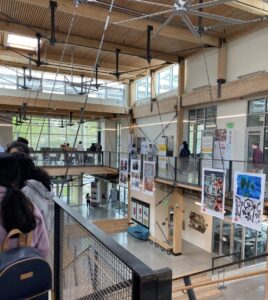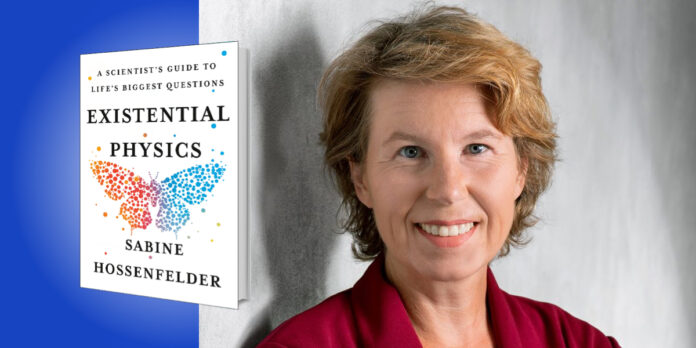It’s easy to get caught up in the bubble of your classes and peers while at Georgia Tech, as everyone in your major struggles together through the same difficult courses. Quickly, you can forget that the world isn’t made up of people that are interested in learning about and exploring the exact same thing as you. It’s exciting when you’re able to learn about the interests of students that you otherwise wouldn’t interact with.
The Southeastern Energy Conference is hosted at Georgia Tech annually and spanned April 7th and 8th this year. The itinerary was packed with keynote speakers and presentations. Most exciting to me, as an undergraduate student, were the poster presentations – put on by other undergrads like myself. Walking around the upper floor of Kendeda, I learned about advancements in water cooling systems for more sustainable building design (it all rests in the texture of the polymers being used!), how electric lines for freight trucks could help us move away from diesel fuel, and how materials for medical devices are being altered to last longer and create less waste – nothing I would ever learn about in my BME classes.
A view of the poster session on the upper floor of the Kendeda Building
Talking with a fellow first-year student, I learned in the span of fifteen minutes that:
(1) I had a lot of misconceptions about solar energy
(2) The majority of solar energy comes from rooftop panels
(3) There are ways for solar energy to be leveraged to better impact communities
Her research focused on the benefits of community solar, something I hadn’t known existed until she mentioned it. Like the majority of Americans (66%, she told me), I believed that the best way for individuals to participate in solar energy was to install panels on the roofs of their houses.
Installing solar panels on your house can pose a financial burden on the offset, and may not be practical for all locations. The other commonly known option is to use solar power generated by utility companies, which mix this energy into the grid they supply for. However, consumers don’t usually have many choices in which utility company they use, as it typically depends on the area, leaving them at the whim of the company in terms of their energy sustainability.
The suggestion made was more community solar farms, in which individuals or businesses contribute to a solar array within their general area. It’s typically a cheaper energy alternative and allows people in apartments or whose houses are in the shade to use solar energy.
Community solar initiatives are becoming increasingly popular across the country, as more and more people try to mitigate their environmental impact. The setting of the Southeastern Energy Conference in the Kendeda building was a constant reminder that the energy research being done on and off-campus is being used in real projects, like all the research that went into Kendeda’s creation. And, after finding out that the conference was complete with snacks, I couldn’t have had a better experience.
References
Southeastern Energy Conference 2022. Southeastern Energy Conference – 2022. (2022, April 6), from https://www.energyexpo.gatech.edu/



